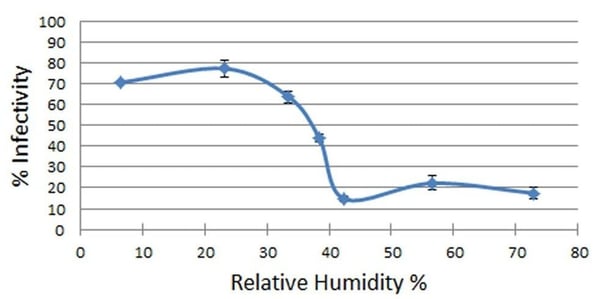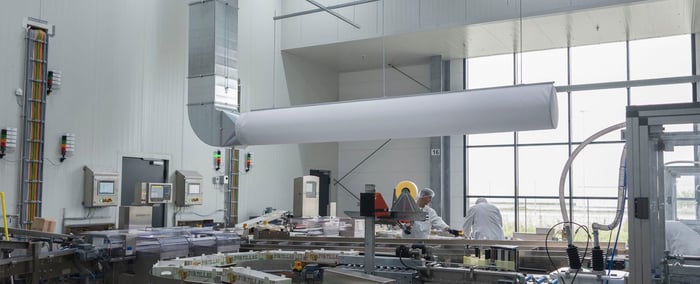As a business owner, you want to offer employees and customers the safest possible environment and minimize the risk of contamination. Good ventilation, filtration, and humidity reduce the spread of pathogens such as COVID-19. In this blog, you can read more about how viruses spread in the working environment and what you can do to prevent this.
The airborne spreading of viruses
A virus can spread through the air. By coughing and sneezing, a virus exists through your nose, throat, or lungs, and passes through the air via small droplets. People can inhale these droplets and become infected.
Yale researchers have indicated an important reason why people become ill more often when exposed to viruses in the air: low humidity. In addition to protocols such as hygiene measures, and in the case of COVID-19, social distancing, it is crucial to create the right level of indoor humidity in the battle against the spreading of viruses.
"The right humidity can slow the spread of the coronavirus, according to Yale scientists."
A little humidity for a healthy workspace environment
The air dries out when buildings are heated, during the winter months, for example. By this time, the fresh cold outside air you bring into the building is dry. By heating the air, the relative air humidity drops even further (to about 20%). This practically moisture-free air gives all the room for viruses to spread over a greater distance. In addition, viruses survive longer in dry air, which increases the risk of infection.

Degree of infectivity in relation to indoor humidity.
Prof. Dr. Akiko Iwasaki of Yale states that at a relative humidity of around 50%, inhaled viruses are repelled, and robust immune responses are generated. Our immune system is less able to defend itself against pathogens in dry air. The body defends itself with the mucous membranes of the respiratory tract, among other things. Dry air makes mucus and cilia (which cover the mucous membranes) in your mouth less able to do their job. Vibrating hairs in the airways transport contaminated mucus. Dry air makes the mucus in your mouth "sticky." This hinders the movement of the bristles and makes it harder to remove unwanted intruders.
Back in the day, it used to be quite normal to put a pan of water on the stove to keep the humidity level in living spaces up. In modern homes and buildings, the focus is mainly on temperature and less on a healthy level of air humidity. There are, however, innovative indoor climate solutions that bring a little moisture into the air, ensuring that the air humidity doesn't drop below 40%. One of these solutions uses indirect/direct adiabatic evaporation, a super sustainable technique using 100% fresh air and a little water.
Maximum ventilation for a safe workspace
The temperature in rooms is seen as an important factor for human comfort. Ventilation and air humidity are often ignored. The legislation only provides for the necessary amount of fresh air per person. This is usually motivated by the fact that more ventilation costs more energy. Since the start of the corona crisis, an increasing number of scientists have recognized that maximum ventilation is an important factor for staying healthy in addition to the previously mentioned relative humidity of 50%. When you can ventilate energy efficiently, it is advisable to do so.
Ventilation provides air purification, which reduces the number of virus particles, according to REHVA. By adding clean air from outside, you dilute and displace the polluted air in a building. The more often a room is ventilated per hour, the cleaner the air becomes.
Ventilation solutions for the industry
An important task for the HVAC industry is to optimize the technology to meet the observations above without increasing energy consumption. An interesting challenge for all producers. As we often see that in order to control energy consumption, only a limited amount of fresh air is often added to existing cooling systems.
Frequent ventilation of rooms with fresh air and thereby optimizing the humidity reduces the chance of pathogens spreading and provides a healthy and comfortable working environment. The natural process of indirect/direct evaporation technology ensures maximal ventilation to bring temperatures to a pleasant level. Systems using this technology are up to 90% more efficient than traditional systems.
Download our whitepaper "Challenges and Opportunities for Energy-Efficient Climate Control" and discover how to create a well-ventilated and sustainable indoor climate within your production facility.
We are happy to help you create a safe, healthy, and comfortable work environment.
For more information on this new evaporative cooling and ventilation technique, check out our webpage "What is evaporative cooling." You can also ask your questions concerning a healthy and optimal indoor climate. Our experts are happy to answer them.






